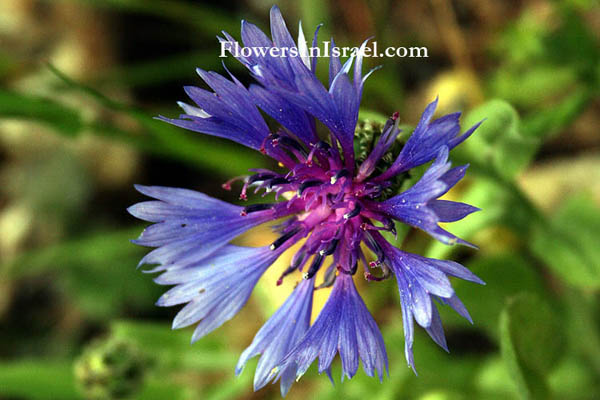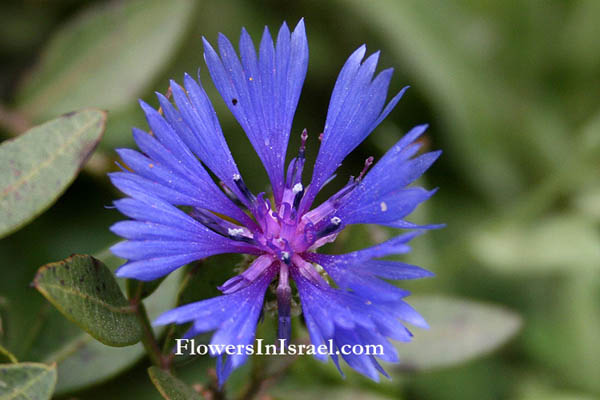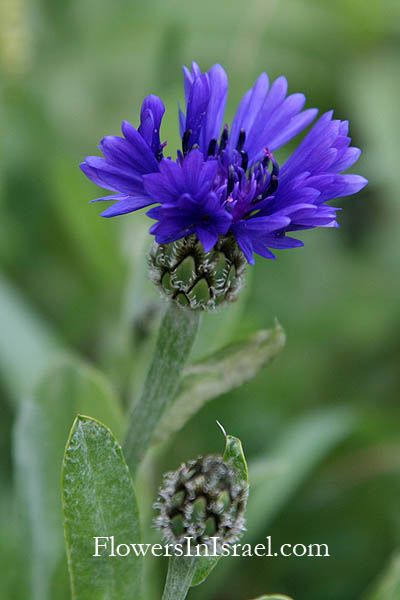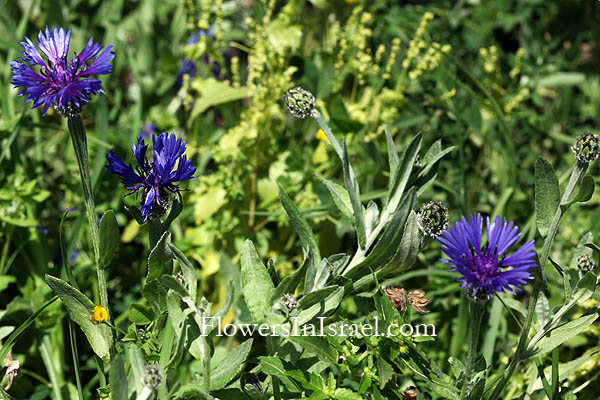Hebrew: דרדר כחול, Arabic: القنطريون الكحلي
| Scientific name: | Centaurea cyanoides Berggren et Wahlenb. | |
| Common name | Syrian Cornflower-thistle, Knapweed | |
| Hebrew name: | דרדר כחול | |
| Arabic name: | القنطريون الكحلي | |
| Plant Family: | Compositae / Asteraceae, מורכבים |

|
| Life form: | Annual | |
| Stems: | 10-25cm in height | |
| Leaves: | Alternate, entire, dissected once, dentate or serrate | |
| Flowers: | Dark Blue | |
| Fruits / pods: | Cypselae | |
| Flowering Period: | March, April, May | |
| Habitat: | Batha, Phrygana | |
| Distribution: | The Mediterranean Woodlands and Shrublands, Semi-steppe shrublands | |
| Chorotype, טיפוס התפוצה: | Mediterranean | |
| Summer shedding: | Ephemeral |

Derivation of the botanical name: Centaurea, gets its name from the centaur, Chiron, who is said in mythology to have taught us the healing power of herbs. cyanoides, cyanos, κυανοϛ, blue steel, azure. The Hebrew name: דרדר, dardar, from Aramaic: דרדרא, dardara; Arabic: דרדאר, darda'ar. (Gen. 3:18, Hos. 10:8). In modern Arabic shauket el-dardar is applied to the star thistles or knapweeds.
Cornflower is still used in French Herbal medicine as a remedy for the eyes. 
Location:Carmel, Hurshat Ha'arbaim, חורשת הארבעים 
Location:Carmel, Hurshat Ha'arbaim, חורשת הארבעים |